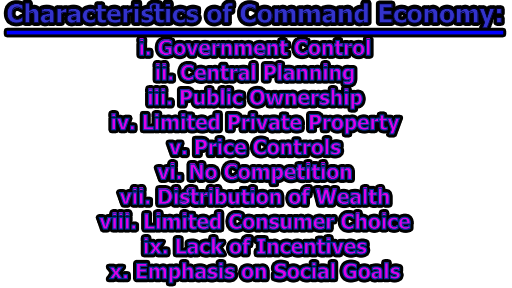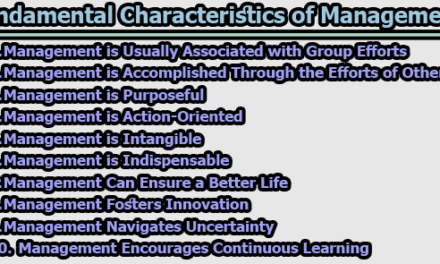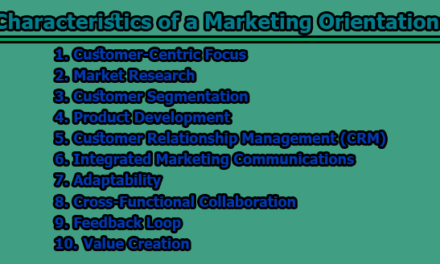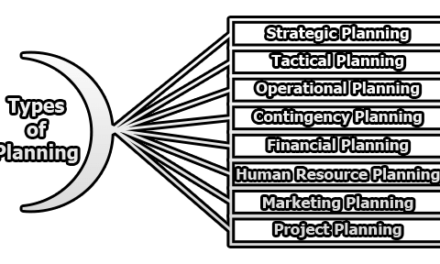A command economy is an economic system in which the government or a central authority plans and controls the production and distribution of goods and services. It is also known as a planned economy, where the government decides what goods and services will be produced, how much they will be produced, and at what price they will be sold. In a command economy, private property and individual ownership are limited, and the government controls all economic decisions. This system is often associated with socialist and communist countries, as well as authoritarian regimes. The main goal of a command economy is to achieve social and economic equality by providing essential goods and services to everyone in the society, regardless of income or social status. In this article, we are going to know about the characteristics of a command economy, its advantages, disadvantages, and examples of a command economy.
Characteristics of Command Economy:
The main characteristics of a command economy are as follows:
i. Government Control: In a command economy, the government or a central authority makes all economic decisions, including what goods and services to produce, how much to produce, and how much they will cost.
ii. Central Planning: A command economy relies on central planning to allocate resources, determine production levels, and set prices.
iii. Public Ownership: A command economy often involves public ownership of key industries, such as utilities, transportation, and healthcare.
iv. Limited Private Property: Private property and individual ownership are limited, and the government may take over businesses or property if they are deemed necessary.
v. Price Controls: The government sets prices for goods and services to ensure they are affordable to everyone in society.
vi. No Competition: There is no competition in a command economy, as the government controls all economic activity.
vii. Distribution of Wealth: The government aims to achieve social and economic equality by providing essential goods and services to everyone in the society, regardless of their income or social status.
viii. Limited Consumer Choice: In a command economy, consumers may have limited choices when it comes to the products they can buy, as the government decides what to produce.
ix. Lack of Incentives: The absence of competition and private ownership can result in a lack of incentives for workers and producers to innovate and improve productivity.
x. Emphasis on Social Goals: The primary goal of a command economy is to achieve social and economic equality, often at the expense of individual freedoms and economic growth.
Advantages of Command Economy:
There are some potential advantages of a command economy:
- Efficient Resource Allocation: A command economy can prioritize the allocation of resources to meet the most pressing social and economic needs, such as healthcare, education, and public infrastructure.
- Social Welfare: By prioritizing the distribution of resources to those in need, a command economy can achieve greater social welfare and reduce inequality.
- Stable Economy: In a command economy, the government can ensure economic stability by controlling prices, wages, and interest rates.
- Elimination of Monopolies: A command economy can prevent the formation of monopolies, as the government controls all economic activity and can limit the power of large corporations.
- Environmental Protection: A command economy can prioritize environmental protection and sustainable development, by directing resources toward environmentally-friendly production and reducing pollution.
- Investment in Public Goods: The government can invest in public goods that might otherwise be underfunded in a market economy, such as education, healthcare, and public infrastructure.
- Unique Vision: It works as per the unique vision set by the government, and all people in the economy work towards that goal, which makes the country achieve its social and economic objectives in a better way.
- Predictability: In a command economy, there is a high degree of predictability as the government controls all economic activity, and can direct resources to meet specific goals.
It is important to note that these potential advantages are only realized when the government is efficient, transparent, and accountable. If the government is inefficient, corrupt, or oppressive, a command economy can result in economic stagnation, shortages, and social unrest.
Disadvantages of Command Economy:
Some of the disadvantages of a command economy include:
- Limited Individual Freedom: In a command economy, the government controls all economic decisions, limiting the freedom of individuals to own property, start businesses, or make economic choices.
- Inefficient Allocation of Resources: Centralized planning can lead to an inefficient allocation of resources, as the government may not have accurate information about consumer preferences, market conditions, or technological advancements.
- Lack of Incentives: A command economy can lead to a lack of incentives for businesses and workers to innovate, increase productivity, or improve quality, as the government controls all economic decisions.
- Bureaucratic Red Tape: A command economy requires a large bureaucracy to plan, manage, and control economic activity, which can lead to inefficiencies, corruption, and a lack of accountability.
- Poor Quality and Variety of Goods: In a command economy, there is limited consumer choice, and the government decides what goods and services will be produced. This can result in poor quality and a limited variety of goods.
- Shortages and Surpluses: Centralized planning can lead to shortages of some goods and surpluses of others, as the government may not be able to accurately predict demand or supply.
- Lack of Flexibility: A command economy is often slow to respond to changing market conditions or technological advancements, as the government controls all economic decisions.
- Lack of Competition: In a command economy, there is no competition, as the government controls all economic activity, which can lead to reduced innovation, lower quality goods and services, and higher prices.
- Difficulty Responding to Consumer Needs: Centralized planning can make it difficult for the economy to respond quickly to changes in consumer needs or market conditions, as the government must approve all economic decisions.
Examples of Command economy:
There have been several countries in history that have implemented a command economy or planned economy. Some of the most notable examples include:
- Soviet Union: From 1922 to 1991, the Soviet Union operated as a command economy, where the government controlled all aspects of economic activity, from production to distribution.
- China: After the Communist Party took power in 1949, China established a command economy, which was later reformed in the late 1970s to allow for some market-oriented policies.
- Cuba: Since the Cuban Revolution in 1959, Cuba has operated as a command economy, where the government controls all economic activity, including the production and distribution of goods and services.
- North Korea: Since the end of the Korean War in 1953, North Korea has operated as a command economy, with the government controlling all aspects of economic activity, from production to distribution.
- East Germany: From 1949 to 1990, East Germany operated as a command economy, where the government controlled all economic activity, including the production and distribution of goods and services.
- Vietnam: After the Vietnam War ended in 1975, Vietnam established a command economy, which was later reformed in the late 1980s and early 1990s to allow for some market-oriented policies.
While these countries have all implemented command economies at one point in time, many of them have since shifted towards more market-oriented economic systems in recent years.
It is apparent that a command economy is an economic system where the government or a central authority controls all economic decisions, including what goods and services are produced, how much they cost, and who gets access to them. While a command economy can provide rapid economic development, social stability, and equal distribution of resources, it also has many drawbacks, including a lack of incentives for productivity and innovation, limited consumer choice, and inefficiencies due to a large bureaucracy. Additionally, a command economy may restrict individual freedoms and result in shortages or surpluses of goods and services. Overall, a command economy can be effective in certain situations, such as during wartime or in times of economic crisis, but it may not be the best choice for long-term sustainable economic growth and prosperity.

Former Student at Rajshahi University










